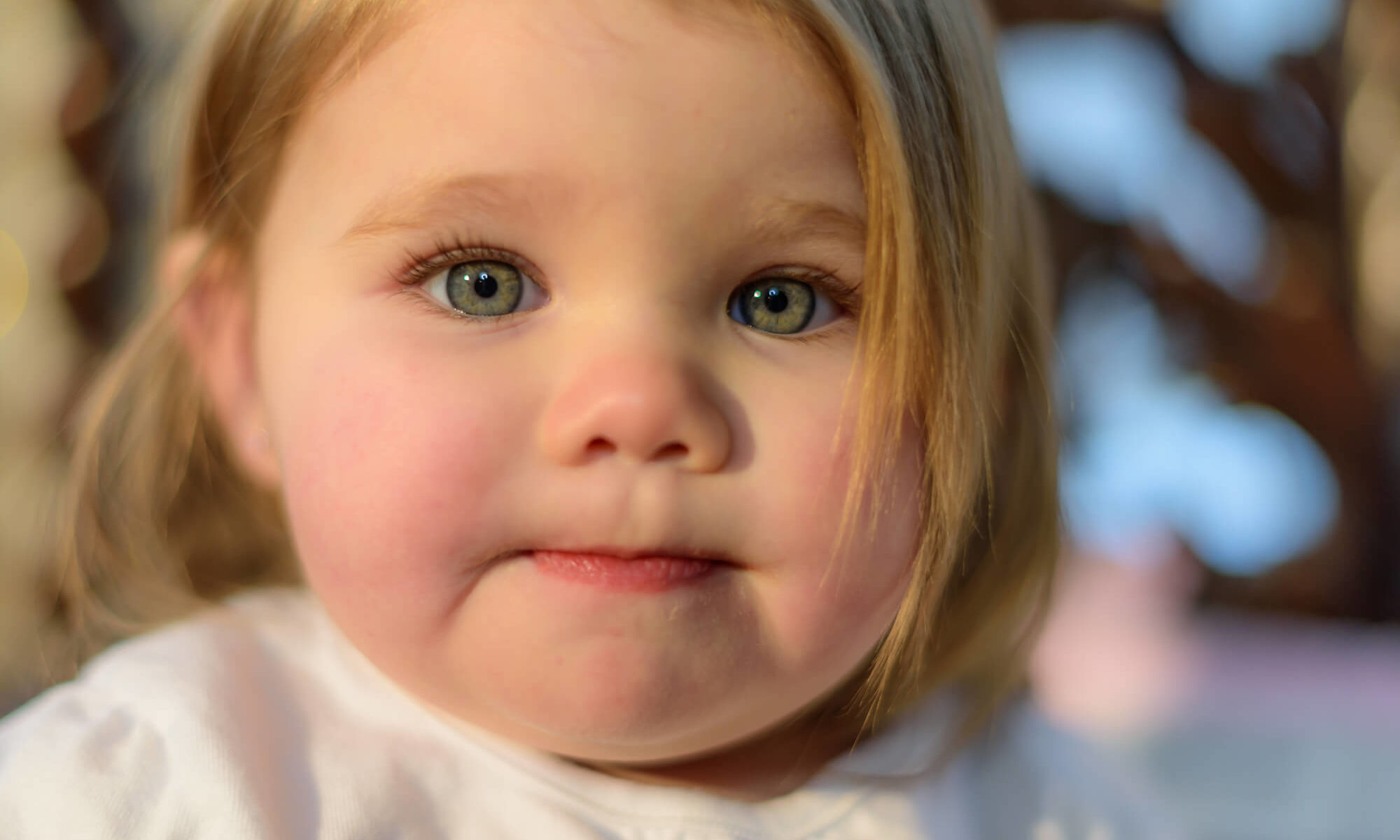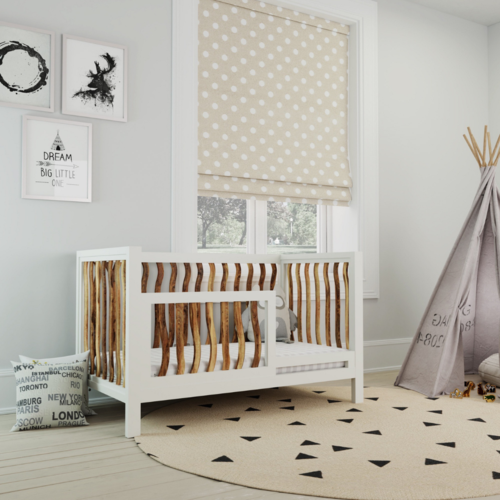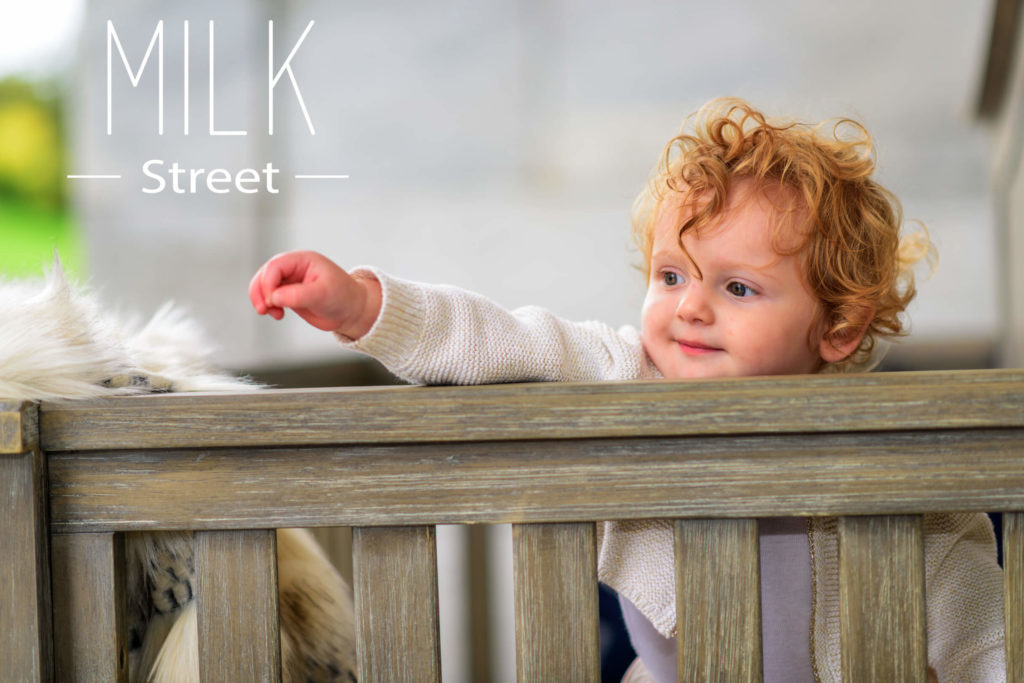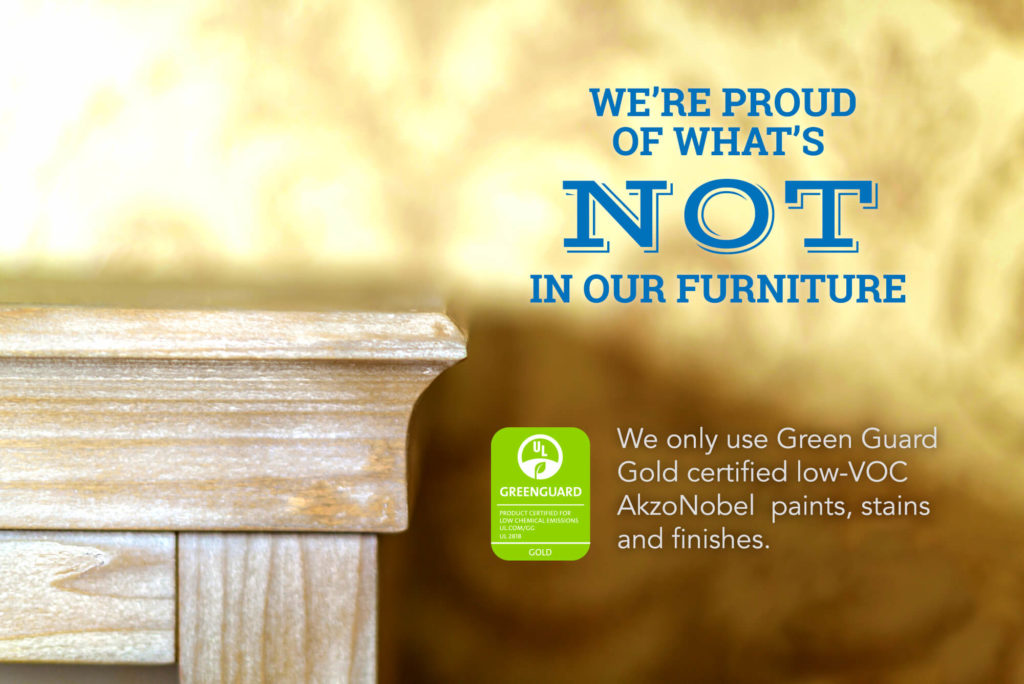Color is one of the most noticeable attributes of the world around us. For babies and small children, understanding color is an essential building block they will use for learning in all areas of their life. So when it comes to designing kids’ spaces, color is one of the most important elements to consider!
Not only does color play an important role in the overall aesthetic of a space, it can also impact an individual’s mood, emotional wellbeing, productivity, learning and behavior.
Newborn Age
Research from the Smith-Kettlewell Eye Research Institute in San Francisco, amongst others, has shown that in the first few months of life, a newborn baby sees primarily in shades of black, grey and white.
For this reason, a monochrome (different shades of one color), or dark color scheme filled with contrasting patterns and shapes provides a newborn baby with the best form of visual stimulation, without overwhelming them with a “circus” atmosphere.
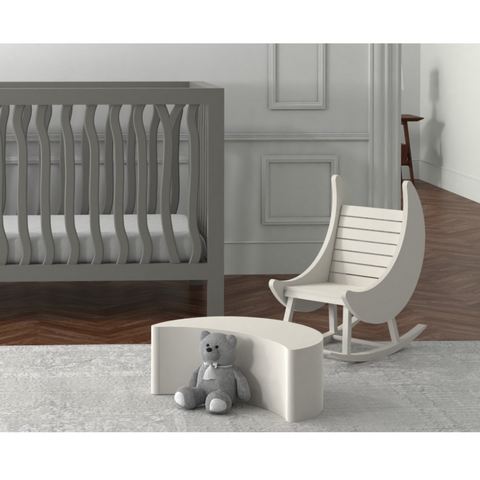
Shades of one color, for example: (black-gray-white), used in a nursery in different shapes and patterns can send the strongest visual signals to a baby’s brain without over stimulating, according to the Dr Sears Wellness Institute. They further state that stronger signals mean more brain growth and faster visual development.
As a result, creating a monochrome nursery for the first few months of life provides a beneficial environment that is said to boost your child’s attention span and curiosity, while also improving memory, and nervous system development.
3-6 Months
By three months of age, experts say most babies are able to see color, with a preference for bright primary colors for brain stimulation.
This is a great time to start implementing toys that contain wide ranges of color.

They toy pictured above is a great option, as well as anything from this website!
You could also add some color to the nursery, without over stimulating their environment. Here is some more information on how to not overwhelm your little ones environment.
6-8 Months
Around the age of 6-8 months, a baby’s color vision is well developed. It is during this time that you may want to introduce a different color scheme into your child’s nursery.

This transition can be gradually achieved by the simple placement of a wall art, toys and books. There is no need to change everything, you can easily add color by using your child’s existing toys or books as functional decor items.
One of my favorite colors that I added to my sons nursery was muted green. I found it was a great color to stimulate sensory development in a subtle yet non-obtrusive way.
1-2 Years
A child’s oral language development begins to emerge between one and two years. It is during this time that a child will also begin to differentiate between colors (around 18 months).

For babies and toddlers of this age, I like to introduce a few more colors to stimulate cognitive development. Add a fun rug, or some brightly colored books.
Some of my favorite colors to stimulate cognitive development for little one’s aged 1-2 years are:
Red
– Red is one of the most stimulating colors at first glance. It is rich and highly emotive, red excites and energizes the body, increasing heart rate, blood pressure, and respiration. Red has always been my sons favorite color!
Pink
– Evokes empathy and femininity and creates a calming atmosphere.
Yellow
– Bright and cheery, yellow is associated with happiness and motivation. Soft, subtle yellows promote concentration while brighter shades can stimulate memory and increases metabolism. However, too much yellow can evoke feelings of anger and frustration, resulting in fussy, over-stimulated babies.
Orange
– Friendly and welcoming, orange borrows many of its parents’ positive attributes. Orange has a distinctly social nature, inspiring interpersonal communication and putting people at ease.
3 to 4 years
By approximately three to four years of age, a child will begin to recognize identify and name basic colors.
At this point, I believe & research shows that every color is beneficial in one way or another. Colors are also pretty personal. Pick what colors appeal to you and see what excites your little one!
The simple placement of different colored items such as beanbags, toys or bedding in your child’s room enables you to help strengthen and reinforce basic color recognition skills.
Thanks so much for reading!
Comment down below your favorite color.
With love,
Kate ![]()

